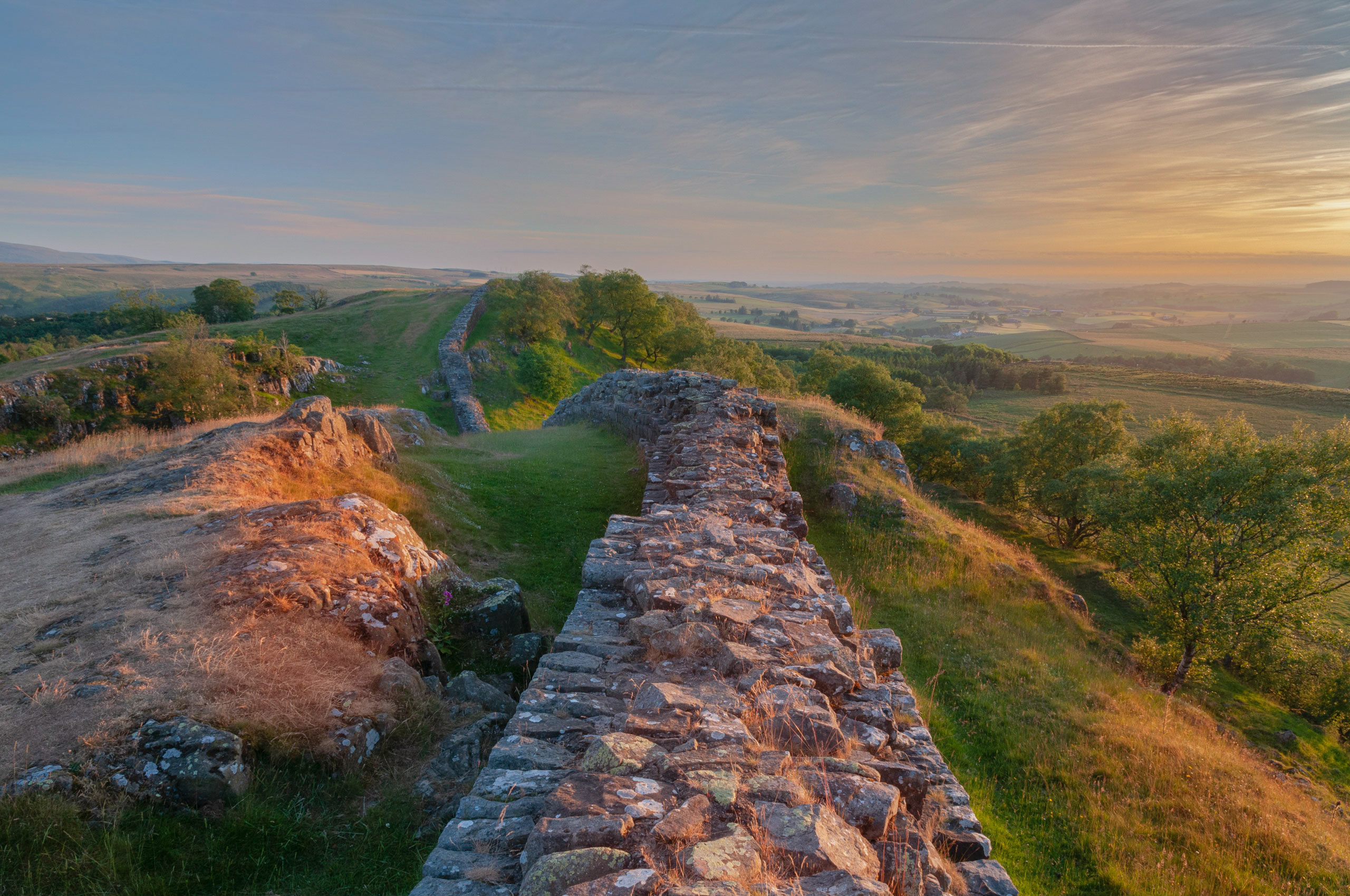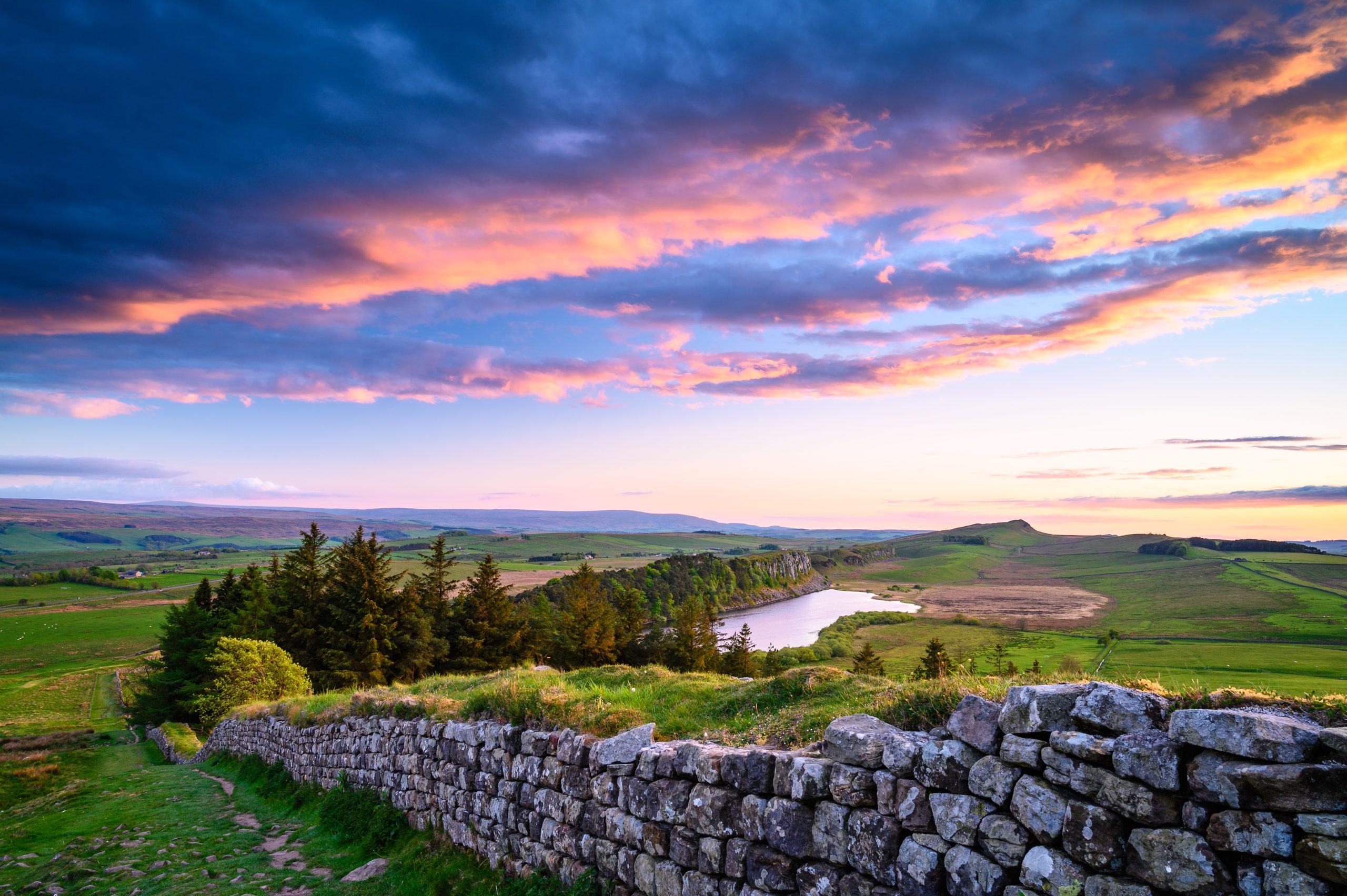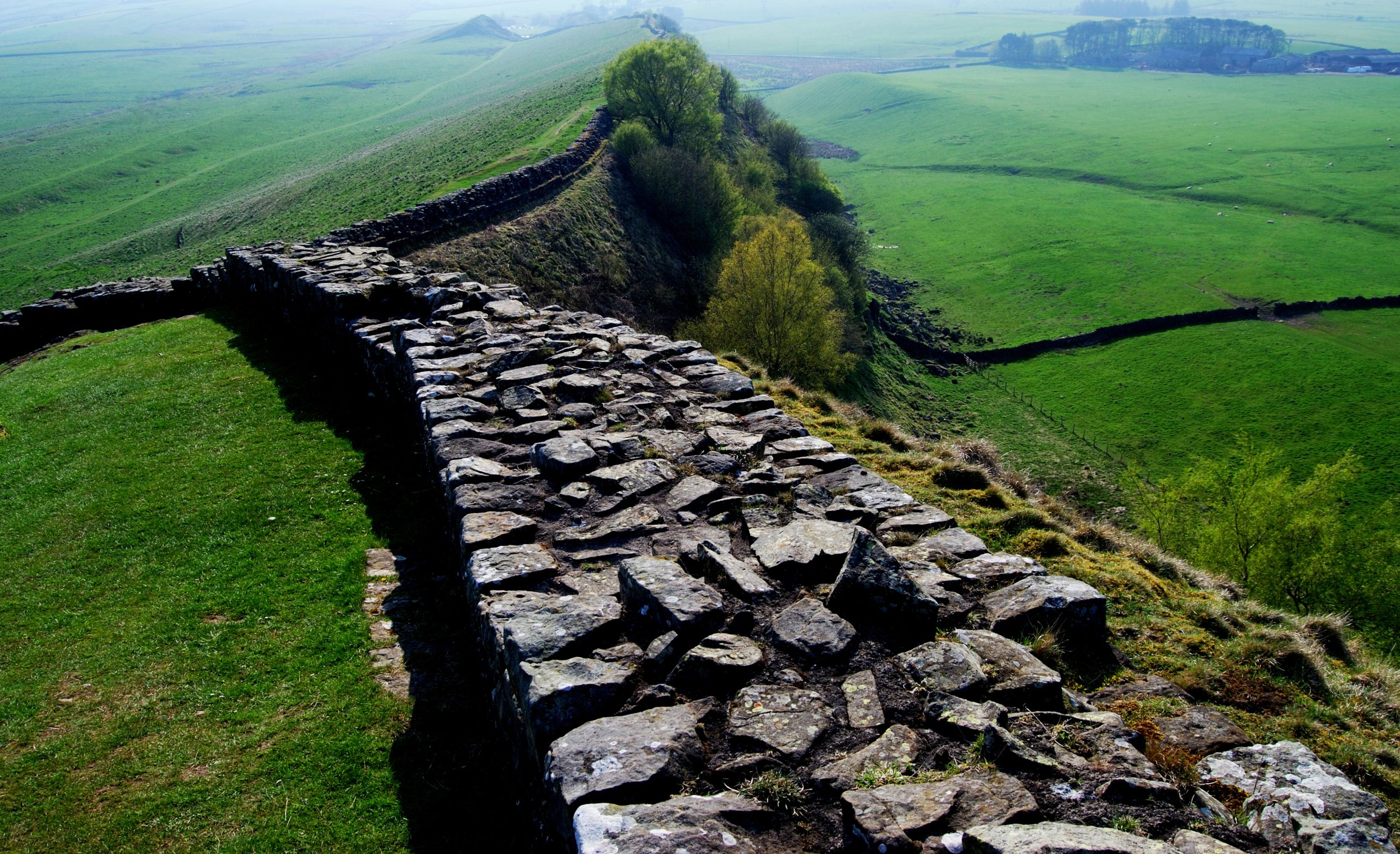Key Points / Quick Summary
- Your main luggage transfers between accommodations daily—pack comfortable evening wear, toiletries, and extra layers
- Carry only essentials in your daypack: water, snacks, waterproofs, first aid kit, and navigation tools (aim for 4–6kg maximum)
- Pack a comprehensive first aid kit with blister plasters, pain relief, and any personal medications
- Layer your clothing and always carry waterproofs—Northumberland weather changes rapidly throughout the day
- Walking poles reduce joint strain on steep sections like Winshields Crags and Walltown; attachable to daypack when not in use
- Energy-dense snacks (nuts, fudge, energy bars) maintain stamina better than heavy packed lunches on longer walking days
Understanding the Baggage Transfer System
When booking a self-guided walking holiday along Hadrian’s Wall Path, the baggage transfer service fundamentally changes how walkers approach packing. Each morning, luggage goes into the transfer system and arrives at the next accommodation by late afternoon. This allows walkers to carry only what they need for the day’s trek, transforming the experience from a heavy backpacking expedition into a comfortable ramble.
The golden rule: anything not needed during the walking day stays in the main luggage. This includes evening clothes, toiletries beyond basic sun cream, extra shoes, and the bulk of clothing layers. Most walkers find they can manage comfortably with a 15–20 litre daypack weighing no more than 6kg when fully loaded.
Essential Daypack Contents
Hydration and Nutrition
Water requirements vary with weather and individual needs, but most walkers find 1.5 to 2 litres sufficient for a full day on the trail. The central section of Hadrian’s Wall Path—particularly between Once Brewed and Banks—offers limited facilities, making adequate water essential. Collapsible water bottles or hydration bladders save space when empty.
Energy-dense snacks prove more practical than heavy sandwiches. Nuts, dried fruit, fudge, chocolate, and energy bars provide sustained fuel without the bulk. Many walkers pack a pasty or filled roll from breakfast, but avoid carrying full picnic lunches that add unnecessary weight. The trail passes through villages and cafés at strategic points—Steel Rigg, Twice Brewed Inn, and various farm shops offer welcome refuelling stops.
Weather Protection
Northumberland’s weather shifts rapidly, even during summer months. Waterproof jacket and overtrousers must live in the daypack regardless of morning conditions. The exposed ridge sections west of Housesteads catch every weather system rolling across the Northumbrian hills.
Pack an extra insulating layer—a lightweight fleece or down jacket compresses small but provides crucial warmth during lunch stops or unexpected temperature drops. Even on warm days, conditions change dramatically at higher elevations and in strong winds.
Navigation and Communication
Most walkers use a combination of printed maps, guidebooks, and smartphone apps. While the Hadrian’s Wall Path is generally well-marked, sections around Heddon-on-the-Wall and through Carlisle can confuse even experienced ramblers. Keep navigation tools readily accessible in waterproof map cases or protective pouches.
A fully charged mobile phone serves multiple purposes: emergency contact, photography, and GPS tracking. Portable battery packs add security for those using phones extensively for navigation or photography. Signal coverage is generally good along the route, though some sections in the central crags experience intermittent reception.
First Aid and Personal Items
A compact first aid kit proves invaluable on any multi-day walk. Blister plasters—especially the gel-based variety—address the most common walking injury. Include:
- Blister treatment (Compeed or similar)
- Paracetamol or ibuprofen for pain and inflammation
- Antihistamine tablets for insect bites or allergic reactions
- Small tube of antiseptic cream
- Assorted plasters and dressings
- Any personal prescription medications
- Tick removal tool (increasingly relevant in British countryside)
Sun cream and lip balm often get forgotten in planning for British weather, yet exposed sections of the wall offer no shade during sunny spells. Factor 30 or higher prevents painful burns that can spoil remaining walking days.
Walking Poles
Walking poles divide opinion among ramblers, but Hadrian’s Wall Path includes several sections where they provide genuine benefit. The steep ascents and descents around Winshields Crags, Sycamore Gap (though sadly the tree itself was felled in 2023), and Walltown place considerable strain on knees and ankles. Poles redistribute impact and provide stability on uneven Roman stonework.
Quality poles collapse or fold for easy attachment to daypacks during flatter sections. Those new to poles should practise before the walk—poor technique offers no benefit and can create arm fatigue.
Camera and Valuables
The Hadrian’s Wall Path offers exceptional photography opportunities, from sweeping vistas atop Cuddy’s Crags to intimate details of Roman stonework at Housesteads. Protect camera equipment in padded cases, and consider whether a full DSLR system justifies the weight or whether a quality smartphone suffices.
Keep valuables, identification, and payment cards in waterproof pouches. Though the route is generally safe, unattended daypacks during café stops or fort visits can prove tempting.
What Stays in Transferred Luggage
The transferred luggage handles everything not needed during walking hours. Pack comfortable clothing for evenings—many accommodations along the wall range from country pubs to quality guesthouses where walkers appreciate changing out of hiking gear. Include:
- Change of footwear (trainers or sandals rest tired feet)
- Casual trousers or skirts
- Fresh tops and underwear for each evening
- Full toiletries (shower gel, shampoo, razor, etc.)
- Phone chargers and adaptors
- Book or tablet for evening relaxation
- Warmer jumper for chilly pub gardens
Lightweight packing cubes organise luggage efficiently and prevent the scramble for items at day’s end. Include a separate waterproof bag for damp or dirty clothing—walking clothes rarely dry overnight in British guesthouses.
Weight Management Strategies
Every item placed in the daypack gets carried for 15–20 miles. Ruthless editing makes the difference between comfortable walking and exhausted trudging. Multi-use items earn their place: a buff serves as sun protection, warmth layer, and emergency bandage.
Weigh the packed daypack before departure. Anything exceeding 6kg (excluding water) needs reconsideration. Walkers often discover they can manage with one fewer “just in case” item. Remember that local shops along the route stock basic supplies—there’s no need to carry a week’s supply of plasters or energy bars from home.
Specialist Considerations
Medication and Medical Needs
Anyone requiring regular medication should split supplies between daypack and main luggage. Carry at least one day’s extra doses in the daypack as insurance against delayed baggage transfer (rare but not impossible). Inhalers, EpiPens, and other emergency medications must remain in the daypack always.
Photography Enthusiasts
Serious photographers face difficult choices about equipment. The dramatic lighting during golden hour at Winshields or stormy conditions over Steel Rigg justifies quality camera gear, but a full kit adds significant weight. Consider whether prime lenses might substitute for heavy zooms, or whether photography goals truly require DSLR equipment.
Seasonal Adjustments
Summer walking requires less clothing bulk but more sun protection and water capacity. Spring and autumn demand warmer layers and more robust waterproofs. Winter walkers (though less common on organised packages) need significantly more equipment, including proper winter boots, warm gloves, and potentially microspikes for icy conditions.
Frequently Asked Questions
How much should my daypack weigh for the Hadrian’s Wall Path?
Target 4–6kg including water for comfortable all-day walking. Anything exceeding 7kg creates unnecessary fatigue on steep sections like Winshields Crags. Weigh your packed daypack at home and ruthlessly edit anything that isn’t essential. Remember that your main luggage transfers separately, so there’s no need to carry evening clothes, toiletries, or extra shoes during the day’s walk.
What size daypack do I need for walking Hadrian’s Wall?
A 15–20 litre capacity daypack suits most walkers perfectly for the Hadrian’s Wall Path. This provides ample space for waterproofs, extra layers, lunch, water, and first aid without encouraging overpacking. Daypacks larger than 25 litres tempt walkers to carry unnecessary items. Look for comfortable shoulder straps, chest and hip belts for stability, and external attachment points for walking poles.
Should I pack lunch or buy food along the route?
Most walkers find a combination works best: carry energy-dense snacks (nuts, chocolate, energy bars) and a light lunch item like a pasty or filled roll from breakfast. The central sections between Once Brewed and Banks offer limited facilities, so some provisions are essential. However, the route passes cafés and shops at regular intervals—Twice Brewed Inn, Steel Rigg, and various farm shops provide welcome alternatives to carrying heavy packed lunches.
Do I need walking poles for Hadrian’s Wall?
Walking poles aren’t essential but prove genuinely helpful on steep sections around Winshields Crags, Caw Gap, and Walltown Quarry. They reduce impact on knees during descents and provide stability on uneven Roman stonework. If you’ve never used poles, practise beforehand—poor technique offers no benefit. Quality collapsible poles attach easily to your daypack during flatter sections through farmland and along Carlisle’s urban stretches.
What happens if it rains during my Hadrian’s Wall walk?
Northumberland weather changes rapidly, so waterproof jacket and overtrousers should live in your daypack every day regardless of forecast. Pack a dry bag or liner to protect electronics, maps, and spare layers. Most self-guided packages continue in wet weather—the path remains perfectly walkable in rain. Gaiters help keep boots drier in sustained downpours. Remember that exposed sections along the crags offer no shelter, so proper waterproofs are essential, not optional.
What first aid supplies do I really need in my daypack?
Pack blister plasters (gel-based varieties like Compeed work best), paracetamol or ibuprofen, antiseptic cream, assorted plasters, and any personal prescription medications. Include antihistamine for insect bites and a tick removal tool. This compact kit addresses 95% of walking injuries. Serious medical emergencies require professional help—keep your mobile phone charged and note that signal coverage is generally good along most of the route, though some central sections experience intermittent reception.





